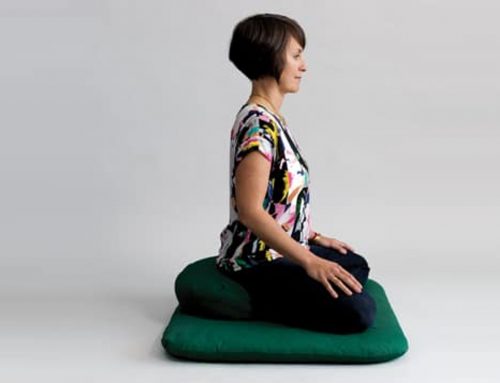What is physiotherapy?
It turns out that one of the most common Google search phrases about physiotherapy is “What is Physiotherapy?”. As physiotherapists, immersed in our craft, we can sometimes forget that it is not at all clear to people who are working in other areas of expertise what we actually do. Surprised though we were that this question popped up, we decided to take the hint and answer the question in depth.
The purpose of physiotherapy
We can’t talk about “What is Physiotherapy?” until we understand it’s fundamental purpose. Physiotherapy’s goal is to manage chronic pain and to rehabilitate people from injury, to keep them moving and as comfortable as possible. It is driven by compassion and technical know-how. We learn how your body works in serious detail and in particular how it copes with injury and pain. Physiotherapy researchers work diligently to find out more about pain and how to manage it. We work long and hard with injured people, such as office workers, war veterans, and sportspeople, to protect and care for their bodies so that they can get on with their lives.
How do physiotherapists treat patients?
If by “What is Physiotherapy?” you mean, “What do Physiotherapists do?” then let’s look at that in more depth. When we pursue pain relief and injury rehabilitation, we use a number of standard tools and techniques. These include:
Exercise regimes
Your physiotherapist will often give you gentle exercise regimes aimed at specific muscle groups that need strengthening. If you are injured, then you may have had to rest for an extended period or the nerves that control certain crucial muscles have been damaged. When we give you a tailored exercise regime, we can gently bring damaged nerves to life or fortify weakened muscles so they can support your movements.
Sometimes we give you exercises that are supported by machines or props, such as parallel bars, or a walking frame. These days, technologists are also exploring AI-powered intelligent exoskeletons. These provide the additional support a patient may need before their muscles are strong enough to perform the movement themselves. When people are searching for “What is Physiotherapy?” they often have partially-formed ideas that include exercise regimes.
Physiotherapy massage
Pain often goes hand in hand with nerve and muscle inflammation. Occasionally, your nerves can also get trapped on their journey to their final destination. This can cause knots and spasms in response to and exacerbating pain. WHen we use massage, we can forcibly relax spasming muscles and provide pain relief. As well as “What is Physiotherapy?” we also see people searching “Physiotherapy Massage”, which would suggest that this also forms part of their idea of what Physiotherapy is. Massage by itself may well not help with the deeper causes of the pain, only short-term pain relief, but as part of a wider programme it can help to accelerate healing.
Spinal correction
Nerve material runs through your spine and out to different parts of the body, it looks a bit like a giant jellyfish. The spine encases this soft and vulnerable nerve material as it exits your head, to protect it. Many of our automatic functions are controlled by the spine rather than the brain – have you ever touched something hot and removed your hand before registering the pain? That’s your spinal nerve material controlling your hand. It’s actually better thought of as one whole brain system rather than a separate brain and nerve system.
Your spine holds up your head which is a whopping 5km perched on top of a column of vertebrae a few centimetres wide. If it sounds like a precarious situation, it’s because it is; lots can go wrong. Something as simple as sitting in a hunched position at your computer can tip your heavy head off the balanced centre line and cause your muscles and bones to react in some extreme ways to keep your head up. The jellyfish tentacles of nerves running through your spine to parts of your body can get trapped as they exit the spine between vertebrae that have leaned into each other. Over time you can get painful slipped discs and a build-up of hard material, which is your body’s desperate attempt to scaffold the spine against the effects of your off-centre head. This is often what causes your back and neck pain if you have poor posture, and sometimes pain in other parts of your body too as the signals get mixed up.
Like Chiropractors, Physiotherapists make spinal adjustments. We can do this with a machine such as a Dynamic Therapy System, a gentle spinal-correction machine (we have one at Advanced Physio Care), or by manipulating your body often causing a cracking sound down your spine. The big difference between Chiropractors and Physiotherapists is that this is only one of our tools. So when looking up “What is Physiotherapy?” it is useful to know that Physiotherapy does encompass what Chiropractors do.
Ergonomics
As well as correcting issues that have arisen in your body, we also try to redesign your sitting and moving environment so that you don’t get recurring problems. That is why you may see physiotherapists giving advice on how to position your desk, chair, and computer at the office. Often people are introduced to the idea of Physiotherapy this way, and then go on to search “What is Physiotherapy?” to discover more.
Electromagnetic stimulation
Have you ever hit your knee badly, then rubbed it to remove the pain? That doesn’t actually remove the pain, what it does is it stimulates the nerves adjacent and that distracts your brain from registering the pain signal so strongly. With electromagnetic waves, such as the radio waves found in TECAR therapy, you will feel a zap which reduces pain in the same way. The lasers also stimulate the metabolism, which increases blood flow and supplies the injury site with more oxygen and other healing effects created naturally in the body. The pain relief effect of TECAR Therapy, in particular, is well supported in the academic literature about laser therapy. Within 10 sessions, it can reduce experienced pain by more than half. Many people will not think of this type of high-tech solution when they search “What is Physiotherapy?”, so this may well have expanded your understanding. You can also see why the core purpose of physiotherapy is a really important anchor to answering the question “What is Physiotherapy?”, it means that Physiotherapists can reach for new and cutting edge tools that align with the purpose of the profession.
When might you need physiotherapy?
Simply put, you visit a therapist when you are injured or in pain. These types of injuries can be caused in the following situations:
- Training for a race
- Sitting poorly in your office chair
- Falling awkwardly
- Pushing yourself in the gym
- Pushing yourself during a race
- During an accident
In many ways, the answer to “What is Physiotherapy?” is “any technique that helps you with injuries caused in the above situations.” You are less likely to get injured under the care of a coach or physical fitness trainer, however, it still happens – especially if you are pushing yourself hard. Fitness trainers are adept at managing healthy bodies and their purpose is focused on muscle mass development, fitness, and aesthetics. Physiotherapists work with damaged bodies and our purpose is to alleviate your pain, restore you to healthy function, and keep you moving. For this reason, physiotherapists receive much more extensive training on the functioning of the body when it is fragile, and are much more heavily regulated by the government. So, when thinking about “What is Physiotherapy?” make sure that the extensive and deep academic qualifications are part of your answer.
Where do physiotherapists work?
Another way to answer the question “What is Physiotherapy?” is to explore where physiotherapists work. Physiotherapists tend to work in rehabilitation centres, private clinics, sports centres, community centres, fitness centres, schools and hospitals. In Singapore, certified Physiotherapy is a relatively new profession and it is licensed by the Singapore government. I trained in Dublin, where Physiotherapy is a much older profession and physiotherapists have much more experience.
How can you try physiotherapy?
Hopefully, this article has answered the question “What is physiotherapy?” for you. Everyone’s pain is a little bit different in our experience, so we do recommend seeing a certified physiotherapist to make sure that you get the best pain-management and recovery regime for you. If you don’t know where to start, book a call with us via our telehealth option – the $20-minute video conference call.
Please visit us at #03-08 SBF Centre near to Capital Tower or book a 20-minute video conference call with Steven Xuelong Qin (our clinic Director) for $20 to get a consultation and discuss treatment options for your pain or injury using our telehealth option (we will collect payment on booking). You can also try our TECAR machine of your injury or pain for just $88 for a 30-minute session.







